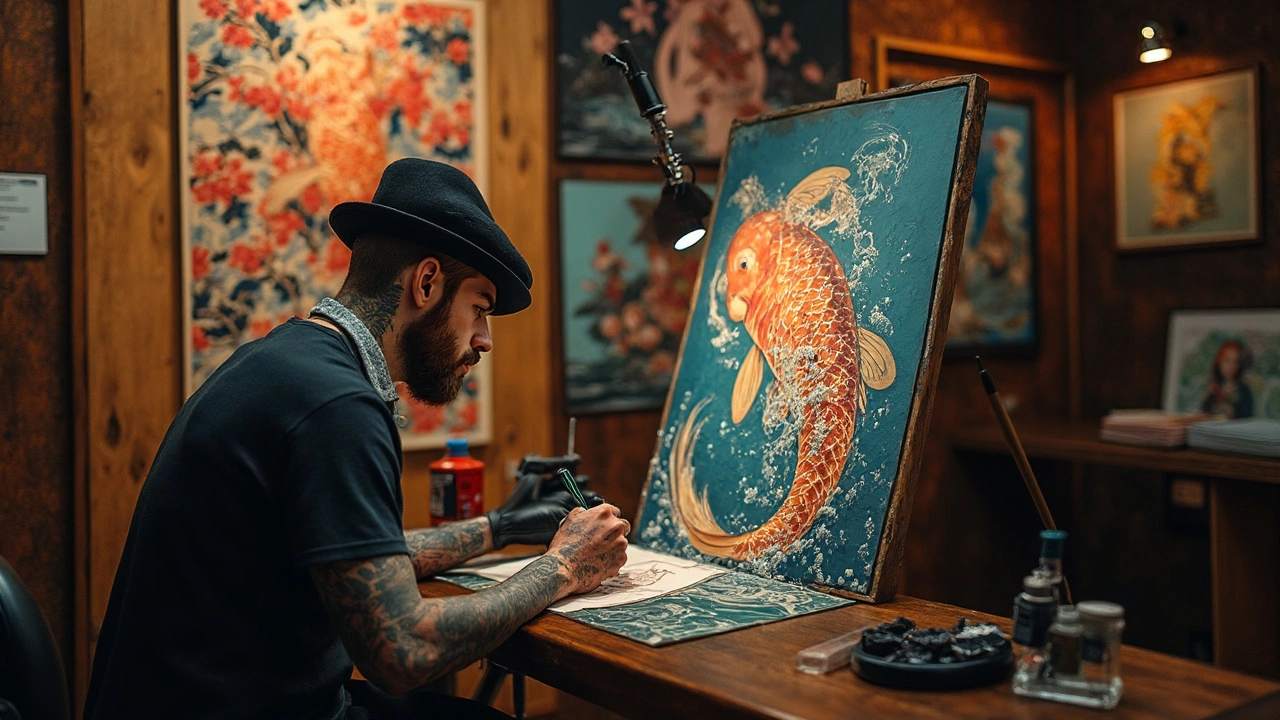Irezumi: What Traditional Japanese Tattooing Really Is
Irezumi is the old-school Japanese tattoo style you often see as full-back or sleeve designs—koi, dragons, koi, waves, and chrysanthemums. These tattoos grew from woodblock prints and folklore, not from random trendy art. If you're thinking about an Irezumi piece, knowing its history, symbols, and how it's made will save you time and avoid mistakes.
Irezumi designs usually tell a story. Koi stand for strength and persistence. Dragons are protection and power. Peonies and chrysanthemums represent wealth and bravery. Colors and placement matter too: a full-back panel reads differently than a small forearm motif. Ask your artist what each symbol means before committing.
How Irezumi Is Made: Tools and Technique
Traditional Irezumi can be done with a hand-poking method called tebori or with modern tattoo machines. Tebori uses wooden handles and metal needles, pushing ink in by hand. It takes longer but gives a unique texture and depth. Machines are faster and often easier to heal, but many artists trained in Irezumi still blend both approaches depending on the effect wanted.
Ink and layering are key. Irezumi relies on bold outlines, smooth color fills, and layered shading to build that classic look. Backgrounds—like wind bars, waves, or clouds—tie figures together and give the composition flow. Proper skin stretching, consistent needle depth, and careful color saturation make the difference between a flat tattoo and one that pops like a print.
Choosing an Artist and Aftercare
Find someone who knows Japanese motifs and composition—not just a good tattooer in general. Look for portfolios with full panels and matching styles, not just single-piece snapshots. Ask if they work by tebori, machine, or a mix, and how many sessions your piece will need. Big Irezumi pieces often require months and staged sessions to keep skin healthy.
Aftercare for Irezumi is straightforward: keep the area clean, follow the artist’s ointment routine, avoid sun and soaking for several weeks, and hydrate the skin long-term. Traditional pieces benefit from good sunscreen on healed skin; colors like red and yellow can fade faster without protection.
Respect matters. Irezumi carries cultural weight in Japan and links to history and identity. If you’re not Japanese, learn the meaning behind motifs you choose and discuss cultural context with your artist. A thoughtful approach makes the art stronger and more meaningful.
Want a practical next step? Save images of compositions you like, note elements you want (figures, background patterns, placement), and book a consultation with an Irezumi-experienced artist. A good meeting will map size, sessions, pricing, and the story your tattoo will tell—so you walk in prepared and walk out with something that lasts.

